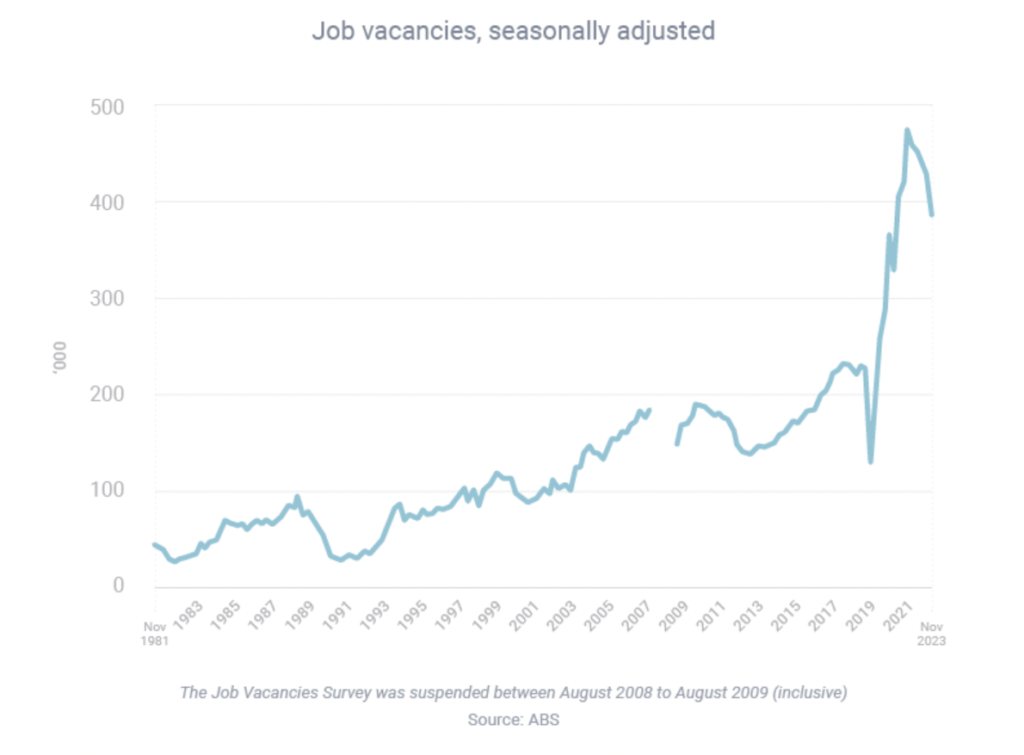Job vacancies have now fallen for six consecutive quarters, reflecting an easing of the labour market in favour of employers.
Vacancies reached a record 475,800 in the May 2022 quarter, according to the Australian Bureau of Statistics, but have steadily fallen since:
-
August 2022 = 461,100 vacancies
-
November 2022 = 454,100
-
February 2023 = 439,100
-
May 2023 = 426,900
-
August 2023 = 391,700
-
November 2023 = 388,800

Still, the number of vacancies in November was more than 50% higher than the 10-year average of 254,600 per quarter, which shows that the labour market remains tight.
The trend, though, is clear. The Reserve Bank’s plan to tame inflation by raising interest rates and pulling demand out of the economy is working: economic growth has been falling and unemployment has been edging higher.
That means the balance of power in the labour market has been shifting from employees to employers. As a result, annual wages growth – which steadily increased from 1.3% in 2020 to 4.0% in 2023 – is likely to be at or close to a peak.
Are you interested in the current interest rates? Schedule a call with us today.









Leave A Comment